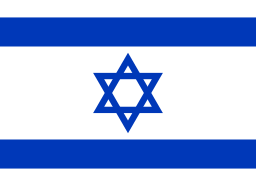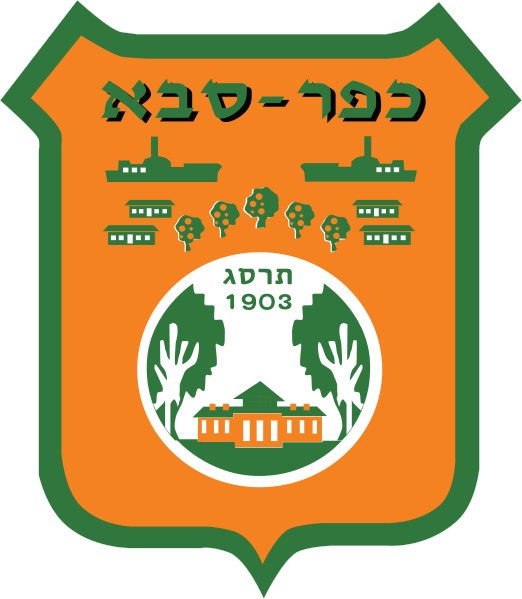
כּפר סבא Coordinates: 32° 10' 17.00" N 34° 54' 30.00" E 
|
||

כּפר סבא Coordinates: 32° 10' 17.00" N 34° 54' 30.00" E 
|
||
| Home | Maps | The Fallen | Links | Census |

Kfar Saba1,2 (Aramaic: Grandfather's Village) is located in the Sharon section of the Central District of Israel. In ancient Judea, during the period of the Second Temple, Kfar Sava was known as Capharsaba. Flavius Josephus refers to Capharsaba in his history Jewish Antiquities (book 13, chapter 15). There, Josephus writes about Judaean King Alexander Jannaeus/Yannai's (103 - 76 BCE)3 attempt to stop Antiochus XII's4 invasion of Judaea. Remains of an ancient Israelite village, discovered east of modern Kfar Saba, is thought to be the ruins of biblical Capharsaba.
Much later, Kfar Saba is mentioned in the Talmud with regard to tithing; its name is found in the third century CE Mosaic of Rehob Talmudic text 5. In the late tenth century CE a Muslim writer refers to Kfar Saba as being on the Damascus road; in the mid-eleventh century the village is described as being rich in fig and oliver trees. The village still existed during the Ottoman Empire's control of the Levant. By the late nineteenth century Kfar Saba was a mud village.
The Jewish moshava of Kfar Saba was established in 1898 on land purchased from the Arab village of the same name. Seven-thousand-five-hundred dunams were obtained (in Ottoman Palestine a dunam equaled 900 square meters; 7,500 dunams equaled 1,668 acres). However, the land was desolate, neglected, far from other Jewish settlements, and without buildings to live in because the Ottoman pasha would not issue building permits; the settlers had to live in clay and straw huts. The Jewish settlers grew almonds, grapes and olives.
In 1910, twelve years after the moshava was founded, local Arabs from the nearby village of Qalqilya were caught stealing almonds from the moshava's orchard; an Arab guard shot and killed one of the thieves, resulting in an Arab mob attacking Kfar Saba, beating residents, destroyung farm equipment, and kidnapping two Jewish guards. Only after help arrived from Petah Tikva was a peace arranged. An outcome of this incident was that Kfar Saba was converted into a permanent settlement with permanent, but camouflaged, buildings built without the required permits.
With the coming of World War One the Ottoman government began to confiscate the settlers' work animals and crops. One year after the war began, there was an infestation of locusts that destroyed crops and vegetation. Then a thousand Jewish refugees from those deported from Tel Aviv and Jaffa descended on Kfar Saba, seeking shelter. The moshava could not accommodate all these people, and many died from poor sanitation. Kfar Saba was caught between two opposing armies, the British Army led by General Allenby and the Ottoman Army; by the time the British won the campaign in 1918, the moshava ceased to exist. After the war, settlers returned and began to rebuild the moshava. This would not be the last time that the town would have to be rebuilt.
During the 1921 riots, Kfar Saba, isolated and vulnerable, evacuated its residents for safety. The town was looted and burned and then rebuilt after the riots ended. The moshava then began to cultivate citrus fruits instead of almonds. Again, beginning in 1936, there was the three-year-long Great Arab Revolt; Kfar Saba was attacked during this time. The year 1943 saw an influx of Jewish refugees escaping from war-torn Europe. Joining them were immigrants from Yemen, Libya, and Turkey.
As war clouds began to appear on the horizon, in August 1947 a Jewish man was found shot to death outside of Kfar Saba. Not long afterwards, the town was first attacked by local Arab militia and then assaulted by the Arab Liberation Army. One day before Israel declared its independence, on 13 May 1948, Jewish troops captured the Arab village of Kfar Saba; the Arab population had already abandoned the town.
Following the war, Kfar Saba expanded due to the influx of Jewish immigrants from around the region. The town's expansion extended into, and incoporated, the abandoned Arab village. In addition to agriculture, the town's economy grew to include a hi-tech and pharmaceutical indutrial zone. By 1962, the moshava was large enough, with a population of 19,000 residents, to be granted city status. In 2004, a rich deposit of petroleum was discovered northeast of the city.
Jordanian artillery shelled Kfar Saba during the Six-Day War of 1967. Its warplanes also bombed the city, killing four people. Despite its proximity to Palestinian territory (just across the Green Line from Qalqilya), its population continued to grow, nearly doubling (to 35,000) in the fifteen years since 1962. Many of its new residents came from the Soviet Union. Beginning with the First Intifada in 1987, Kfar Saba has been subjected to terrorist attacks and suicide bombers, killing and maiming many people.
|
Please contact Leah Haber Gedalia with your additions, questions, corrections, or comments! webmaster: richard L. baum |
|
This page is hosted at no cost to the public by JewishGen, Inc., a non-profit corporation. If it has been useful to you, or if you are moved by the effort to preserve the memory of our lost communities, your JewishGen-erosity would be deeply appreciated. |
|
KehilaLinks Home |
JewishGen Home
|
Created: 8 Mar 2018
Last Modified: 04-15-2018
Copyright © 2018 Leah Gedalia
All Rights Reserved.